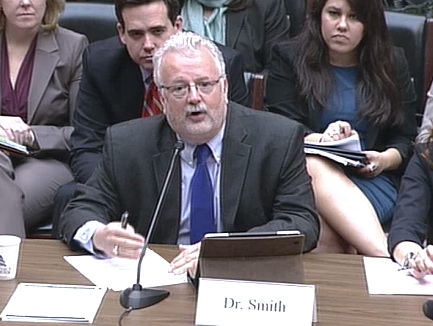 If medical devices were better integrated with IT systems and made to follow standards for interoperability with each other and with electronic health records, the U.S. healthcare industry could eliminate a net $30 billion in unnecessary expenses a year, according to a new study. But a lot of things have to happen for savings to be that substantial.
If medical devices were better integrated with IT systems and made to follow standards for interoperability with each other and with electronic health records, the U.S. healthcare industry could eliminate a net $30 billion in unnecessary expenses a year, according to a new study. But a lot of things have to happen for savings to be that substantial.
"To realize the benefits, providers, payers, medical device manufacturers and the government will need to collaborate and partner to promote the development and adoption of seamlessly interoperable devices," West Health Institute says in a report. Still, the La Jolla, Calif.-based research and policy center is optimistic about the prospects.
"We're trying to show it's worth it," West Health Chief Medical and Science Officer Dr. Joseph M. Smith tells MobiHealthNews. Smith testified Wednesday before the House Energy and Commerce Subcommittee on Health in a hearing about potential Food and Drug Administration regulation of mobile apps, the same day West released its study.
"We see an enormous opportunity to use information technology, device innovation, and smart/learning systems to transform healthcare delivery and create empowered, informed consumers of healthcare," Smith said in his prepared testimony. He also told the congressional panel that patient safety efforts would be "more meaningful" if various forms of technology were interoperable.
The reason for such opportunity is that there is an estimated $700 billion in waste in what passes for a healthcare system in the U.S., according to the report, which carries the attention-grabbing title, "Improving patient care with more than $30 billion in annual health care savings." Of that $700 billion, there is about $36 billion in "addressable waste" related to the lack of device interoperability.
West sees $2 billion in unnecessary spending from adverse events that could be prevented by "safety interlocks" when an IT system senses a problem and relays that information to a medical device. Another $3 billion comes from reduced cost of providing care, $12.3 billion from increased clinician productivity and $17.8 billion from higher treatment capacity that would result from cutting length of hospital stays.
There is an additional $1.2 billion in waste because device and software makers have not widely adopted standards, the report says.
It will take a big investment to realize those savings, though. West found that 90 percent of hospitals use at least a half-dozen different types of devices that could be integrated with EHRs, but only about one-third actually have integrated medical devices with IT systems. Those organizations that have started integration have done so for less than three types of devices.
"We're trying to show it's worth it," Smith explains. He says it might be helpful for someone to conduct a "parallel analysis to show the value of noninteroperability."
True interoperability is more than just one-way communication to an EHR. "That isn't interoperability. That feels more like reporting," Smith says. Devices have to interoperate with each other and also should be able to accept data from IT systems for safety and efficiency gains. For example, when a physician enters an order for an intravenous medication, the EHR could send the dosing information to a smart infusion pump, saving the administration nurse from having to re-enter data and preventing a potential transcription error.
While the "meaningful use" EHR incentive program stems from the belief that providers did not have much financial incentive to adopt EHRs because the majority of benefits accrue to payers, the opposite appears to be true in the case of device interoperability. West says that providers reap 93 percent of benefits from connecting devices to EHRs and to each other. But that also creates a conundrum.
"While the benefits accrue to the providers, the investment has to come from the vendors," Smith explains. Smith says provider organizations have a vested interest in devices being able to communicate with IT systems, but few have demanded interoperability from their vendors.
"I think there may be a role for government here," Smith says. "I'm not necessarily saying it has to be a heavy-handed thing."
It is a Food and Drug Administration (FDA) issue if device manufacturers want to label their products as interoperable because the regulatory agency has not defined interoperability. He suggests the FDA could provide a value proposition to buyers and a regulatory path for vendors by clarifying this term. A third party could take on this responsibility, much like how EHR certification has evolved, Smith adds.
"We're trying to stimulate the change that I think is needed," Smith says of the report.
"We wouldn't tolerate noninteroperability in our private lives," he adds. Smith notes that the same music he downloads for his phone also works on his computer because standards developed in response to consumer expectations.














